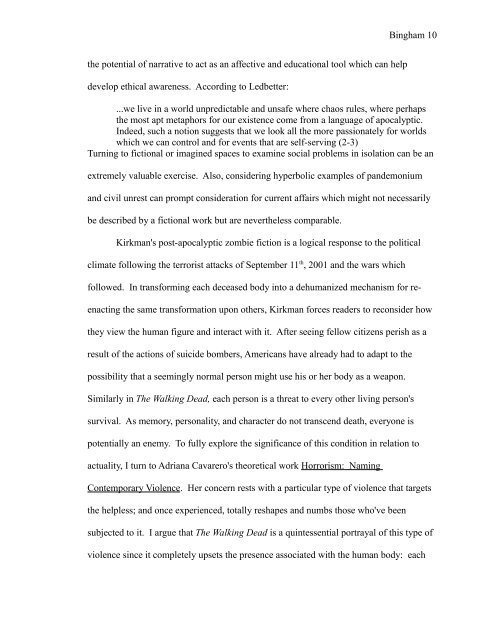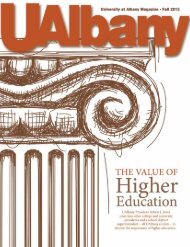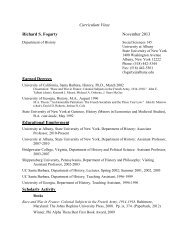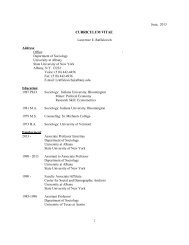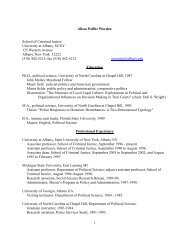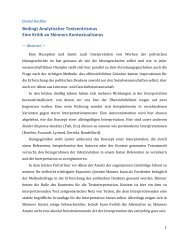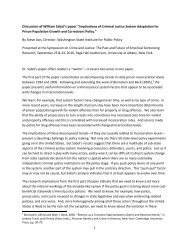Walking Corpses & Conscious Plants: Possibilist Ecologies in ...
Walking Corpses & Conscious Plants: Possibilist Ecologies in ...
Walking Corpses & Conscious Plants: Possibilist Ecologies in ...
You also want an ePaper? Increase the reach of your titles
YUMPU automatically turns print PDFs into web optimized ePapers that Google loves.
B<strong>in</strong>gham 10<br />
the potential of narrative to act as an affective and educational tool which can help<br />
develop ethical awareness. Accord<strong>in</strong>g to Ledbetter:<br />
...we live <strong>in</strong> a world unpredictable and unsafe where chaos rules, where perhaps<br />
the most apt metaphors for our existence come from a language of apocalyptic.<br />
Indeed, such a notion suggests that we look all the more passionately for worlds<br />
which we can control and for events that are self-serv<strong>in</strong>g (2-3)<br />
Turn<strong>in</strong>g to fictional or imag<strong>in</strong>ed spaces to exam<strong>in</strong>e social problems <strong>in</strong> isolation can be an<br />
extremely valuable exercise. Also, consider<strong>in</strong>g hyperbolic examples of pandemonium<br />
and civil unrest can prompt consideration for current affairs which might not necessarily<br />
be described by a fictional work but are nevertheless comparable.<br />
Kirkman's post-apocalyptic zombie fiction is a logical response to the political<br />
climate follow<strong>in</strong>g the terrorist attacks of September 11 th , 2001 and the wars which<br />
followed. In transform<strong>in</strong>g each deceased body <strong>in</strong>to a dehumanized mechanism for reenact<strong>in</strong>g<br />
the same transformation upon others, Kirkman forces readers to reconsider how<br />
they view the human figure and <strong>in</strong>teract with it. After see<strong>in</strong>g fellow citizens perish as a<br />
result of the actions of suicide bombers, Americans have already had to adapt to the<br />
possibility that a seem<strong>in</strong>gly normal person might use his or her body as a weapon.<br />
Similarly <strong>in</strong> The <strong>Walk<strong>in</strong>g</strong> Dead, each person is a threat to every other liv<strong>in</strong>g person's<br />
survival. As memory, personality, and character do not transcend death, everyone is<br />
potentially an enemy. To fully explore the significance of this condition <strong>in</strong> relation to<br />
actuality, I turn to Adriana Cavarero's theoretical work Horrorism: Nam<strong>in</strong>g<br />
Contemporary Violence. Her concern rests with a particular type of violence that targets<br />
the helpless; and once experienced, totally reshapes and numbs those who've been<br />
subjected to it. I argue that The <strong>Walk<strong>in</strong>g</strong> Dead is a qu<strong>in</strong>tessential portrayal of this type of<br />
violence s<strong>in</strong>ce it completely upsets the presence associated with the human body: each


